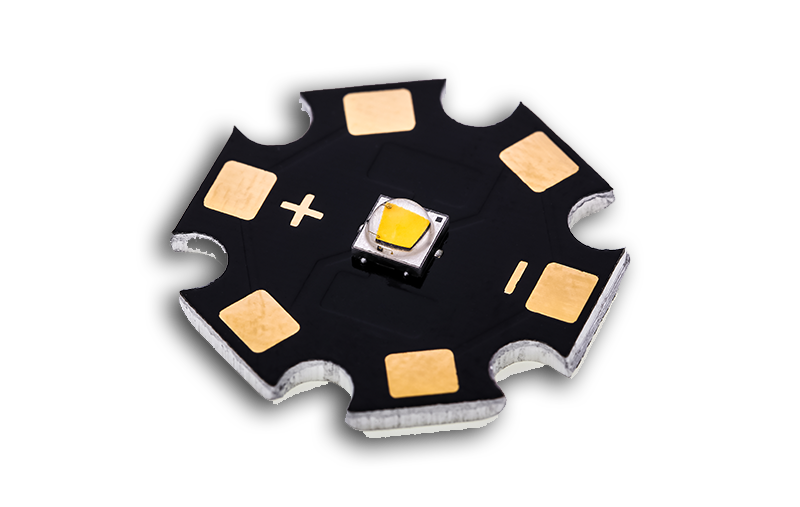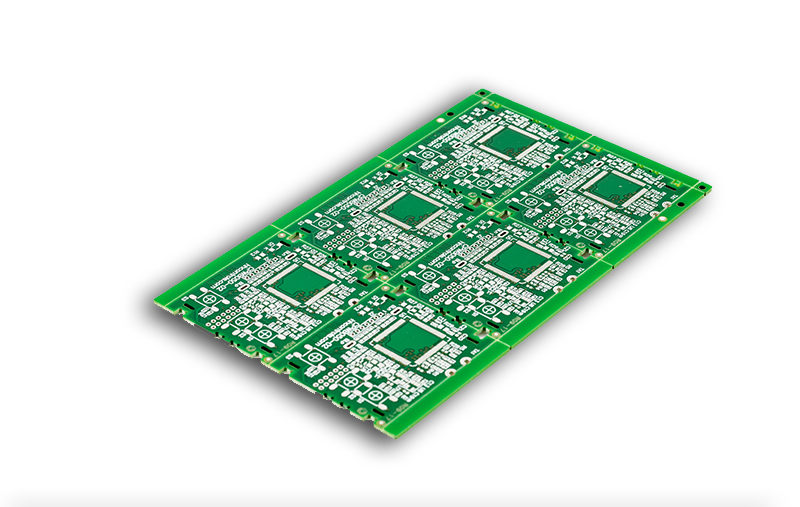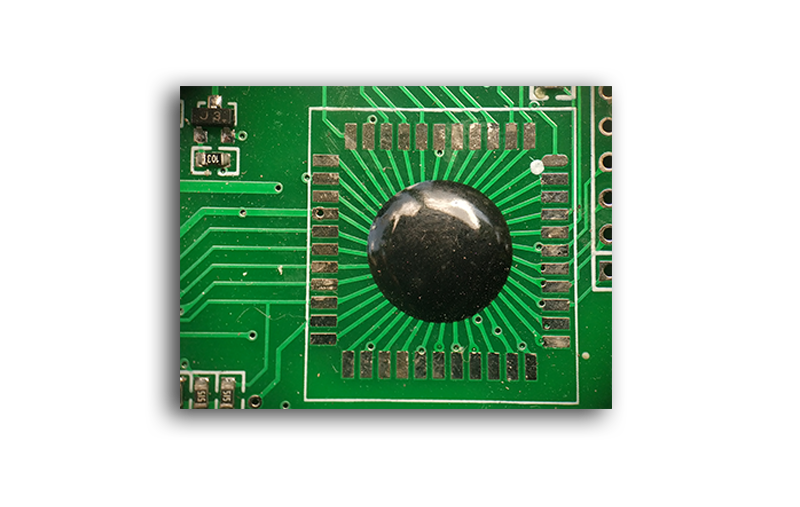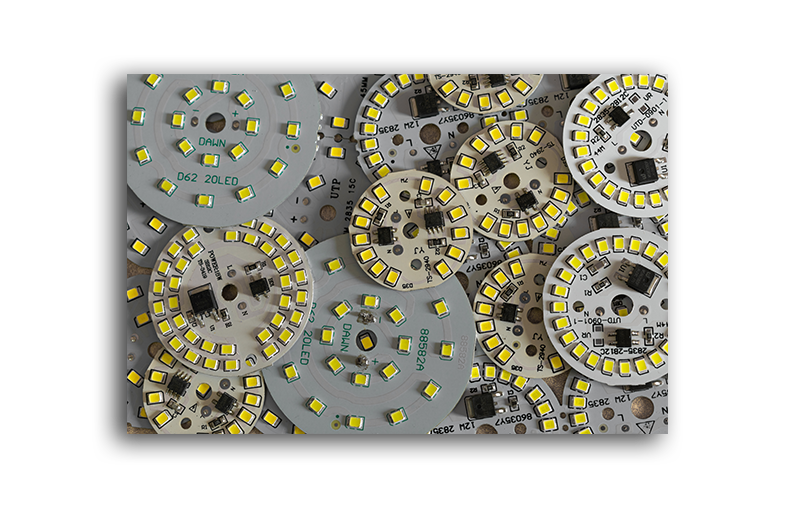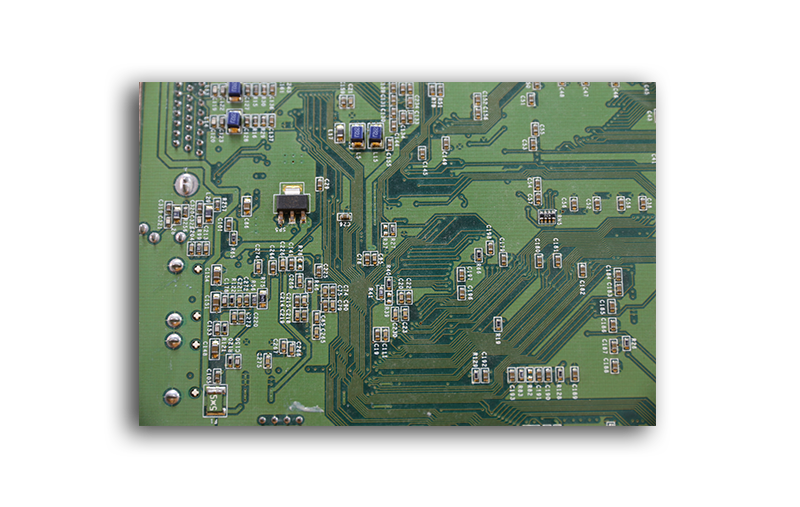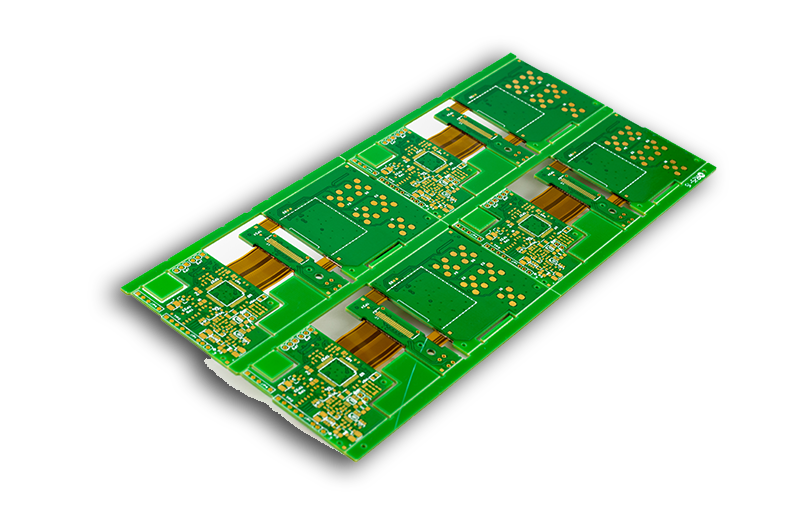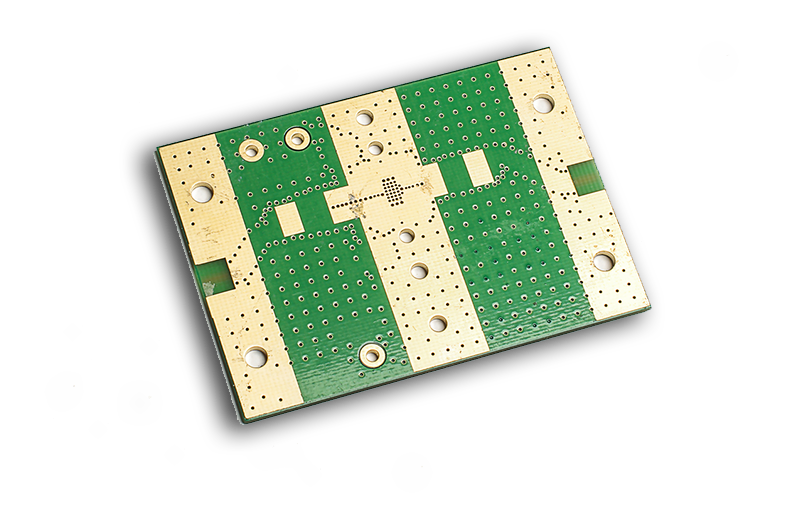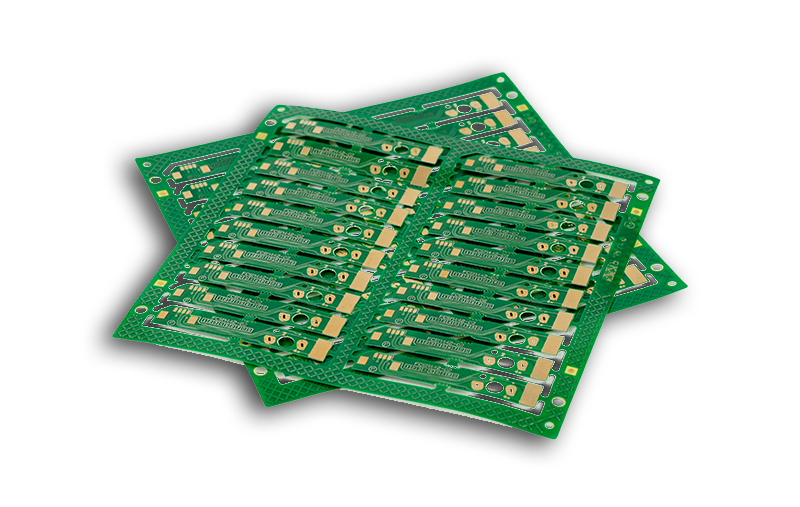Metal Core PCB
- The thermal PCB is another name for the metal core PCBs.
- In short, the MCPCB is a PCB that has a metal base. That is, the PCBs main material for its plate or base is metal.
- Also, this metal core PCB helps to dispel heat from highly vulnerable components to low vulnerable parts like a heat sink.
- We have professional standard reviewers that ensure strict quality control measures in every production process.
- We leverage advanced testing technologies, such as AOI Test, E-Test, X-RAY, and Impedance Control.
- We have an in-house PCB design and assembly process review, which ensures high-quality control. We are committed to helping you get the highest quality products and services at competitive prices.
- We use a wide range of PCB material options, such as FR4, High TG FR4, Rogers PCB, Metal-based PCB, and High-frequency Materials.
- We have a superior customer care department, which supports person-to-person services. Our customer care department is flexible and approachable if you want to make any updates before the production process begins.
What Is a Metal Core PCB/MCPCBs?
The thermal PCB is another name for the metal core PCBs.
In short, the MCPCB is a PCB that has a metal base. That is, the PCBs main material for its plate or base is metal. The base metal material helps to spread heat cropping up during operation.
Hence, a base metal is a great heat conductor, and it helps to easily dissipate all the heat produced by the PCB during operation.
These days, we have new developments like the metal core that replaces the conventional CEM3 and FR4 materials used for old-designed PCBs.
Also, this metal core PCB helps to dispel heat from highly vulnerable components to low vulnerable parts like a heat sink.
What Are the Materials and Thickness LEVELS of
Metal Core PCB?
The metal core PCB usually comes in three options; Aluminum core PCB, Copper core PCB, or a mixture of specific metal alloys.
However, the aluminum core PCB is the most common material. Sometimes, materials like steel or brass get ordered, but it’s only on rare occasions.
As for thickness, metal core PCBs are usually very thick and extremely hard to cut into smaller pieces. And this could pose a slight problem for people that intend to cut the metal core PCB.
It’s also essential to check out the chemicals used in manufacturing the metal PCB materials and notice if they react to the metals.
Usually, the metal core PCB plates are about 30 mil – 125 mil in thickness. However, you can still find metal plates that are thinner or thicker.
The copper foil thickness of MCPCB is usually around 1 – 10 oz.
The Materials for Metal Core Boards
1 Layer Metal Core Boards
| Metal Core Materials for 1-layer boards | Thermal Resistance | Thermal Conductivity | Dielectric Glass Transition (Tg) | Surface Resistivity | Tracking Resistance | Dielectric Breakdown (AC) |
|---|---|---|---|---|---|---|
| – | K/W | W/mK | °C | MΩ | PLC | kV |
| HA50 (3) | 0.41 | 2.2 | 120 | 10^6 | 0 | 4.3 |
| TC-Lam 2.0 | 0.50 | 2.0 | 100 | 10^7 | 0 | 5.0 |
| Ventek VT-4B1 | – | 1.0 | 100 | 10^7 | 0 | 7.5 |
| Ventek VT-4B3 | – | 3.0 | 130 | 10^8 | 0 | 9.0 |
| AL-200 | 0.35 | 2.0 | – | 10^8 | 0 | 3.5 |
| AL-300 | 0.30 | 3.0 | – | 10^8 | 0 | 3.5 |
2 Layer Metal Core Boards
| Metal Core Materials for 2-layer boards | Thermal Resistance | Thermal Conductivity | Surface Resistivity | Dielectric Glass Transition (Tg) | Tracking Resistance | Dielectric Breakdown (AC) |
|---|---|---|---|---|---|---|
| Ventek VT-4B1 | – | 1.0 | 10^7 | 100 | 0 | 7.5 |
| Ventek VT-4A2 | – | 2.2 | 10^7 | 130 | 0 | 7.5 |
| Ventek VT-4B3 | – | 3.0 | 10^8 | 130 | 0 | 7.5 |
| CCAF-05 | 0.45 | 2.2 | 10^6 | – | 0 | 6.0 |
Metal Core PCB Applications
Metal core PCBs are quite useful in some specific applications, which usually generate a ton of heat in their process.
As we mentioned earlier, metal core PCBs are ideal for dissipating heat that builds up during operation. That’s why most manufacturers make use of it to maintain the solid performance of their devices. They also come in handy if you run a lot of long operational processes.
So, the major applications of the metal core PCBs are:
1. Ideal for electronic communication equipment like electrical telegraphy, filter circuits, and frequency amplifiers.
2. It’s a perfect fit for audio equipment like balanced amplifiers, input & output amplifiers, preamplifiers, power amplifiers, audio amplifiers, and many others.
3. Power supply equipment like DC/AC converters, SW adjusters, switch regulators, and many others.
4. Used for Computers and Computing components like CPU motherboards and power supply devices.
5. Energy-saving lamps and lanterns, LED lamps.
6. Power devices like converters, solid relays, bridges, rectifiers, and many more.
7. Automation devices found in offices like motor drives.
What Are the Different Types of
Metal Core PCB?
There are different sorting for metal core PCBs with various PCB locations and trace layers.
Hence, the categorization of the metal core PCBs leads to the three major types, which are;
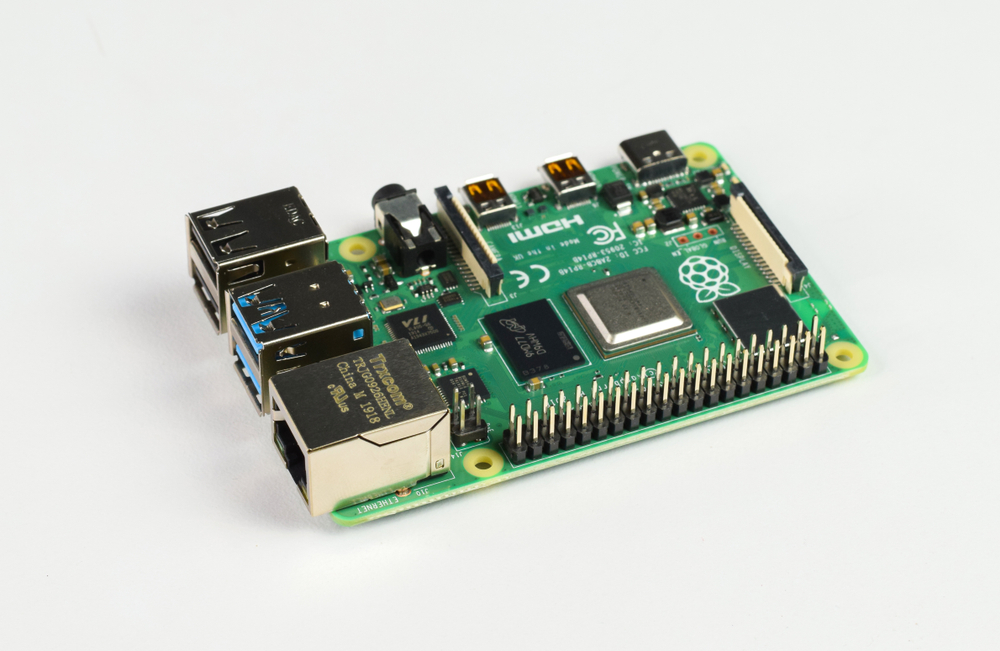
Single-Sided Metal Core PCB
This metal core PCB comes with prints of traces found at a side of the layer.
Hence, it comprises of the following:
1. Solder Mask
2. Copper Circuit layer
3. Metal Base (ic layer will perform as the conducive link between IC and heat sink. Unlike FR4. The copper and Aluminum or Copper Alloy)
4. Non-conducting dielectric layer
5. IC components
The single-sided metal core PCB also comes with a thin insulating dielectric layer between a copper foil and a metal base.
This kind of PCB also possesses a prepreg dielectric, which offers high-quality heat transfer from the foil and components to the metal base plate.
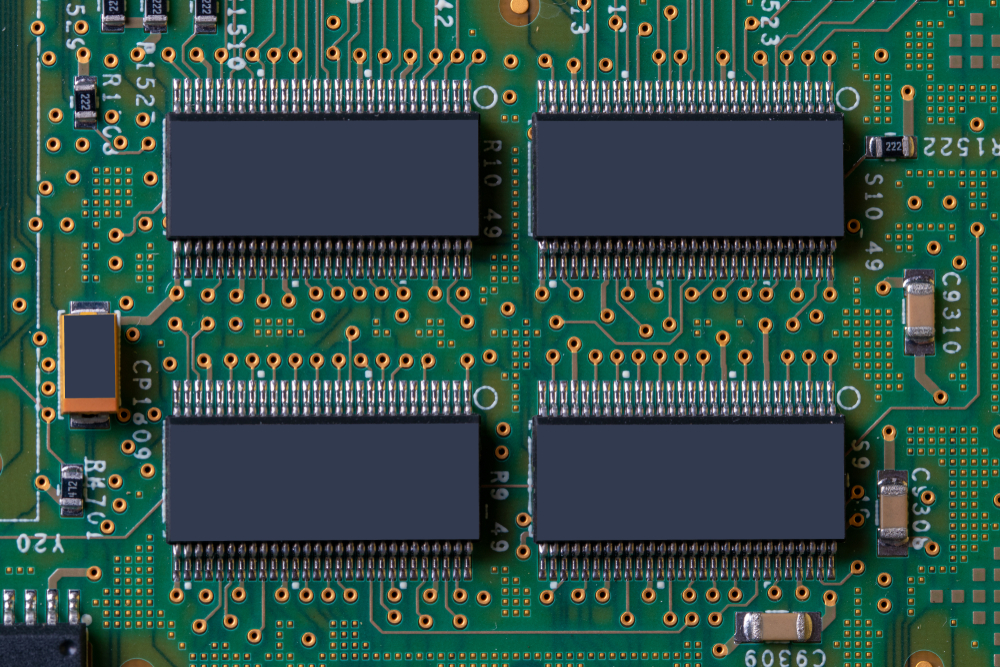
Double Sided Metal Core PCB
Both the double-layer metal core PCB and the double-sided metal core PCB reside in highly advanced circuits. The layout of the metal core is what separates both devices.
So, a double-sided metal core PCB comes with a metal core that lies between two of the board’s conductor layers.
Also, it has a dielectric layer that stays between the metal core and the copper layer of the PCB. So, the metal core merges with the conductors via the SMD and vias, usually on top or at the base.
For the double layer metal core PCB, the metal core is usually the conductor layer. You can also find the conductor layers lying beside the metalcore. Here, the metal cores are iron alloys, aluminum, or copper.
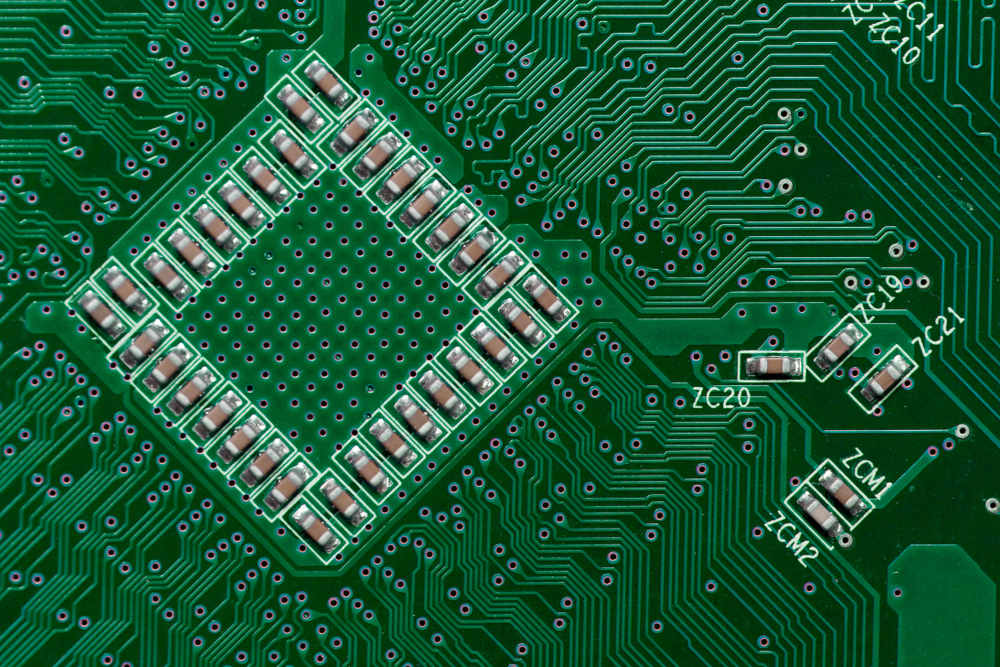
Multilayer Metal Core PCB
The Benefits of Metal Core PCBs
The major benefits of using metal core PCBs are:
1. It comes with a special substrate material that helps boost the design sturdiness of devices working at high temperatures.
2. The PCBs can expel surplus heat from devices.
3. It helps to blend dielectric polymer layers in high thermal conductivity—making them suitable for low thermal resistivity.
4. The PCBs dissipate heat 9-times faster than the regular FR4 PCBs.
5. It’s pretty solid and sturdy—in terms of its mechanical capacity.
- Prototype orders placed within 24 hours
- Normal lead time (5-7 working days for some PCBs prototypes and small batch production)
- Faster lead time (48 hours for some PCBs prototypes and small batch production)
What Is the Difference Between Metal Core PCBs
Vs. FR4 PCBs?
| – | Metal Core PCBs | FR4 PCBs |
|---|---|---|
| Plated Through Holes | Plated Through Holes isn’t available for 1-layer Metal Core PCBs. | All its PCBs use Plated Through Holes. |
| Conductivity | High thermal conductivity, about 1.0W – 4.0W. | Low thermal conductivity, about 0.3W |
| Solder Mask | Solely White color solder mask available for only the top. | Dark color solder mask available for both bottom and top. |
| Machining Process | V-score must use diamond-coated saw blades. | Uses the regular machine processes |
| Thermal Relief | Provides its unique thermal relief; So, no plating processes, deposition, and via drilling. | Involves longer drill cycles, adds lots of processes, and uses vias for heat transfers. |
| Thickness | Limited thickness variations | Wide range of thickness |
The Difference Between Metal Core PCBs and Standard Epoxy Glass PCB
The major difference between metal core PCBs and standard epoxy glass PCBs is the heat transfer level.
MCPCBs usually engage in high-speed heat transfer, especially for devices working in high-temperature situations. But the standard epoxy glass doesn’t transfer heat as fast as metal core PCBs.
So, metal core PCBs are quite ideal for devices that run operations at high temperatures.
The Surface Mounted Components of Metal Core PCBs
When it comes to metal core PCBs, it’s safer to use only surface-mounted components. The reason is simple. Since the bottom layer of the PCB is metal, a plated through-hole may result in a short circuit.
When you’re dealing with LED PCBs, you’ll have plated vias. And the plated vias permit the components to transmit heat. In the process of soldering, you may notice some solder enter the vias. And this happens if you don’t fill the vias, and it can cause errors.
But, metal core PCBs have a different mode of operation. That is, its metal layer conducts heat efficiently. Hence, PCBs don’t need vias. Instead, the metal core PCBs need the drilling of some large mounting holes. That way, the production process becomes faster.
Also, once the drill cycle is over, the metal core PCBs with single layers will move directly to circuit imaging instead of going through the electroless copper deposition in PTH processing. Afterward, your PCB will follow the same process as any standard FR4 design.
What Are the Manufacturer’s Considerations for Metal Core PCBs?
It’s necessary to consider some factors before producing a metal core PCB. And you can achieve the best results as long as you understand the way the materials work. You should also restrict your design to an SMT-only single-layer.
What if you notice that it’s difficult to route your design to one layer? Your best bet will be to opt for other possible configurations. But, it’s crucial to note that the configurations fall outside the scope of this piece. They are:
▶ If you have a double layer PTH board with aluminum on the inside, you’ll need an expensive pre-drill. You’ll also need to fill it with insulation. Then, re-drill it to create plated holes that won’t cause a short circuit.
▶ If you have a standard processed PCB with two or more layered boards, you can opt for a thermal dielectric material. Plus, you can laminate a metal plate at the bottom to transfer heat.
Also, if you have a design priority that involves cooling multiple LEDs, metal core PCBs are an excellent solution. They are quite popular these days in a variety of lighting applications. Also, MCPCBs can be subject to specific design restrictions. But, its fabrication process could be somehow simpler.
Metal Core PCB design Technical Options
Before you start creating a metal core PCB, it’s crucial to be sure about its application. The goal here is to follow a customer’s requirement. Plus, your design should be flawless (without interruptions).
The process of building a metal core PCB is similar to producing various PCBs. But the only difference is that your substrate material will be metal. Plus, it’s important to have the schematics of the PCB you plan to make.
If you want to create an affordable design, it’s ideal to consider things like:
▶ What kind of material do you plan to use? This factor helps you know the number of components you can add to your design. And it affects the area of your design.
▶ What’s the depth of your base material? This factor helps to control cost.
▶ Focus on the quantity of copper you use for your design. It helps to determine the level of your design. While you’re at it, it’s necessary to consider CTE rules.
The Production Process for Metal Core PCBs
The process of producing metal core PCBs include the following steps:
1. Create design and output. You can do this with design software like KiCAD, eagle, Altium Designer , OrCAD, etc.
2. Use a film to print the designer’s copy. But, you should do this after doing a DFM check.
3. Proceed to use the film back to print the image as you create the MCPCB. While you’re at it, ensure your environment is clean to avoid errors.
4. Use a chemical that effectively removes excess copper, you don’t need on the final board.
5. Ensure that you punch all your alignments in line.
At this point, you can use an inspection laser to confirm the digital image with the original Gerber files. Afterward, the design can proceed to the final stage. The final stage involves unpacking the PCB layers accordingly. Then, you can use an x-ray locator to get the drill points.
After that, the board will go through plating and copper deposition. The next process is electroplating the entire PCB layer with copper.
The final stage involves the board passing through V-scoring and profiling.
How Metal Core PCB Is an Ideal Solution to Thermal Problems in PCBA and PCB?
Heat Sink
- A heat sink is a key component that MCPCBs use to dissipate heat externally via a metal core . Dissipation carried out by the external heat sink is usually very fast.
Convex Platform Structure
- The convex platform structure is another component that brings a solution to thermal-based issues. Hence, you can find this component assembled at the metal core PCB’s anterior part. Also, the structure acts as an insulating may for thermal conductivity.
Why Should You Choose Us?
The metal core PCBs are fast becoming a thing these days. And it doesn’t stop at saving you cost. But, it also improves the life of your gadgets as well.
Are you considering this option? Well, we’ll love to be part of your journey to build quality PCBs to your specification. You can count on our wealth of experience over the years. Plus, you can rely on us for any amount of orders.
Get in touch with us today and you can get a free quote.
FAQs
1. What to consider during the manufacturing process of Metal Core Printed Circuit Boards?
Well, first, you need to consider the design process. Then the layers Metal Core, such as metal layers, thermal insulating layers, the layer of copper (copper layer). Also, the type of PCBs, like 1-layer PCB or multi-layers. Besides, metal plates, hole components, and surface finish are also essential for the quality metal core. Also, some industry technologies of the electronic devices or electronic equipment.
2. What about the materials of metal core board manufacturing process?
For material combinations of metal core boards, the metal substrate included Aluminum substrates(boards with aluminum) or aluminum PCBs, metal copper foil.
3. Is there other applications except what has talked about above?
MCPCB is also in use in communication electronics, power converters (power conversion), power LEDs(incandescent units), LED boards, medical devices, and LED Based Products.
4. Do I need to focus on the physical properties of metal core board?
Yes. You need to pay attention to thermal management, thermal transfer, dissipation of heat, thermal heat dissipation thermal paste, heat source, and thickness variation.
Our Certifications
Here are the certificates we have:
IATF 16949:2016 ISO 9001:2015 ISO14001:2015 ISO13485:2016 UL Also, all our products follow the IPC & ROHS Standards. More importantly, we always strive to manufacture high-end PCB products.
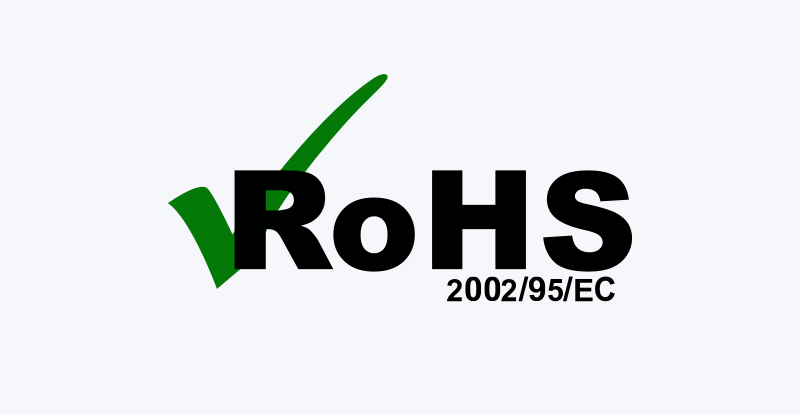
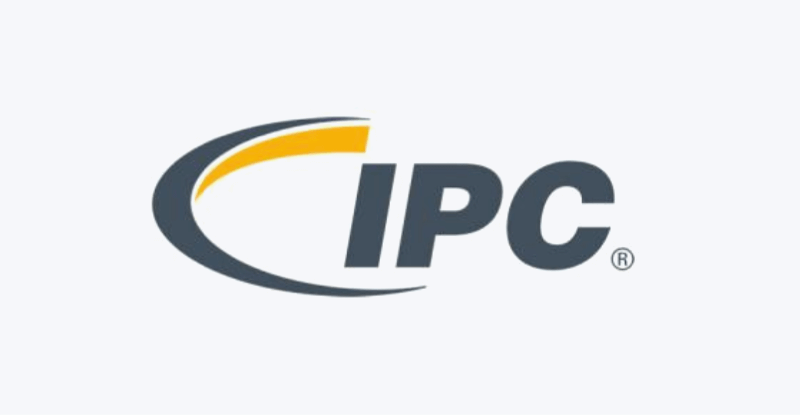
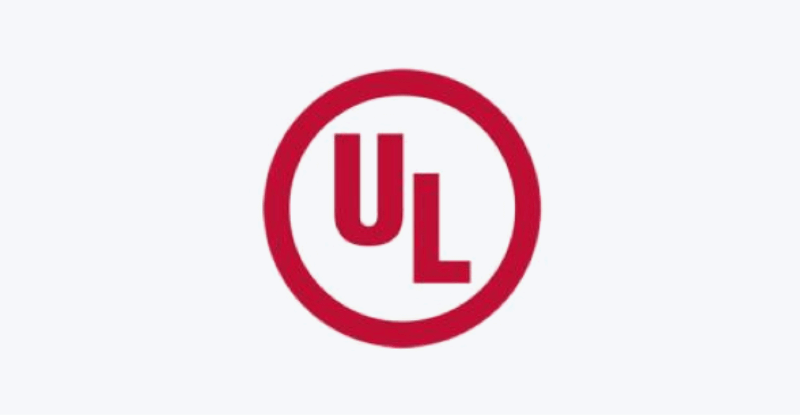
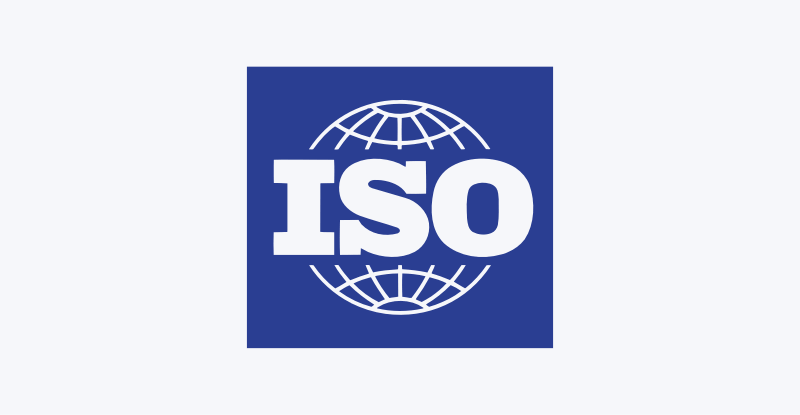
PCB Product Show
